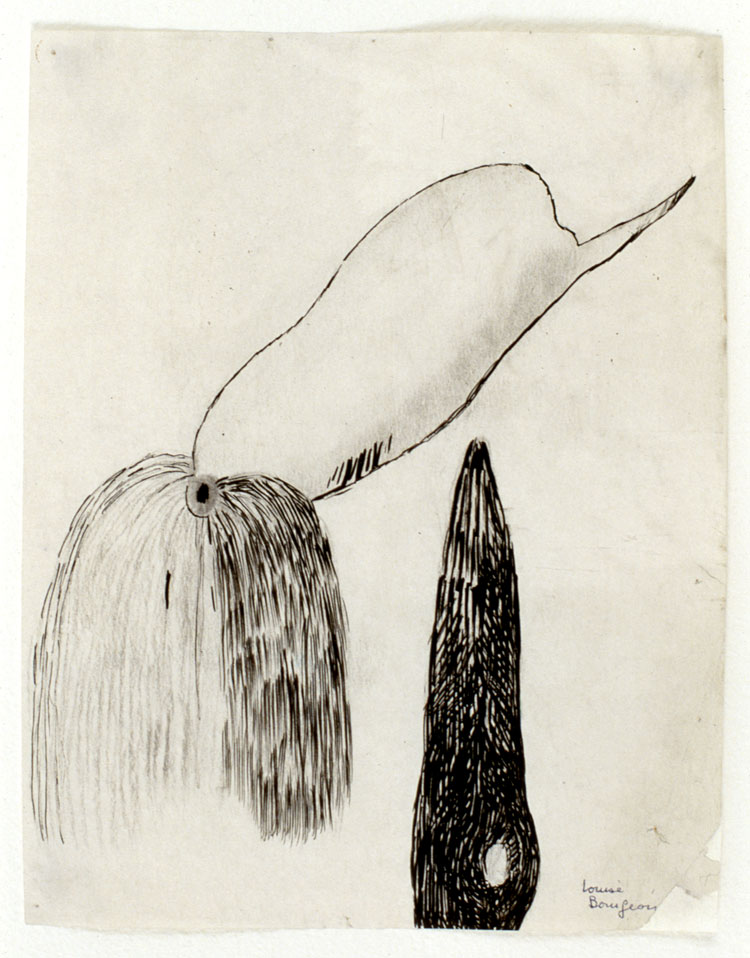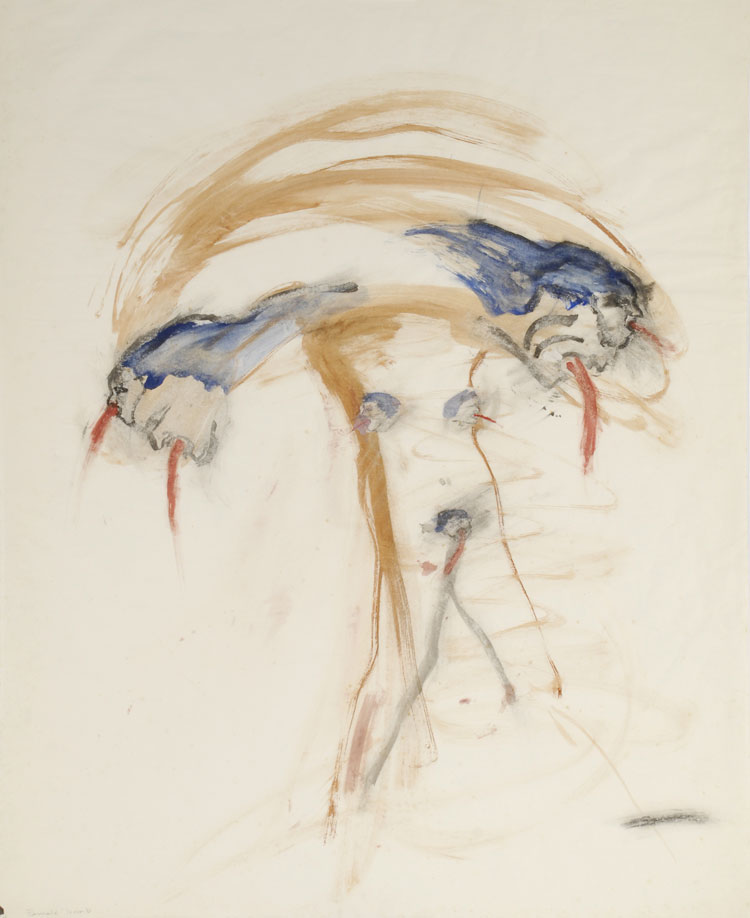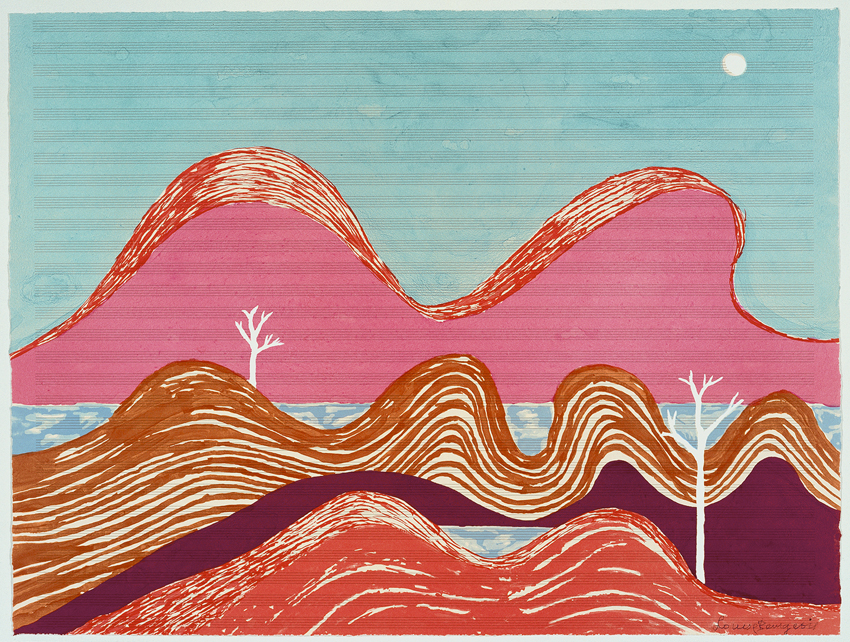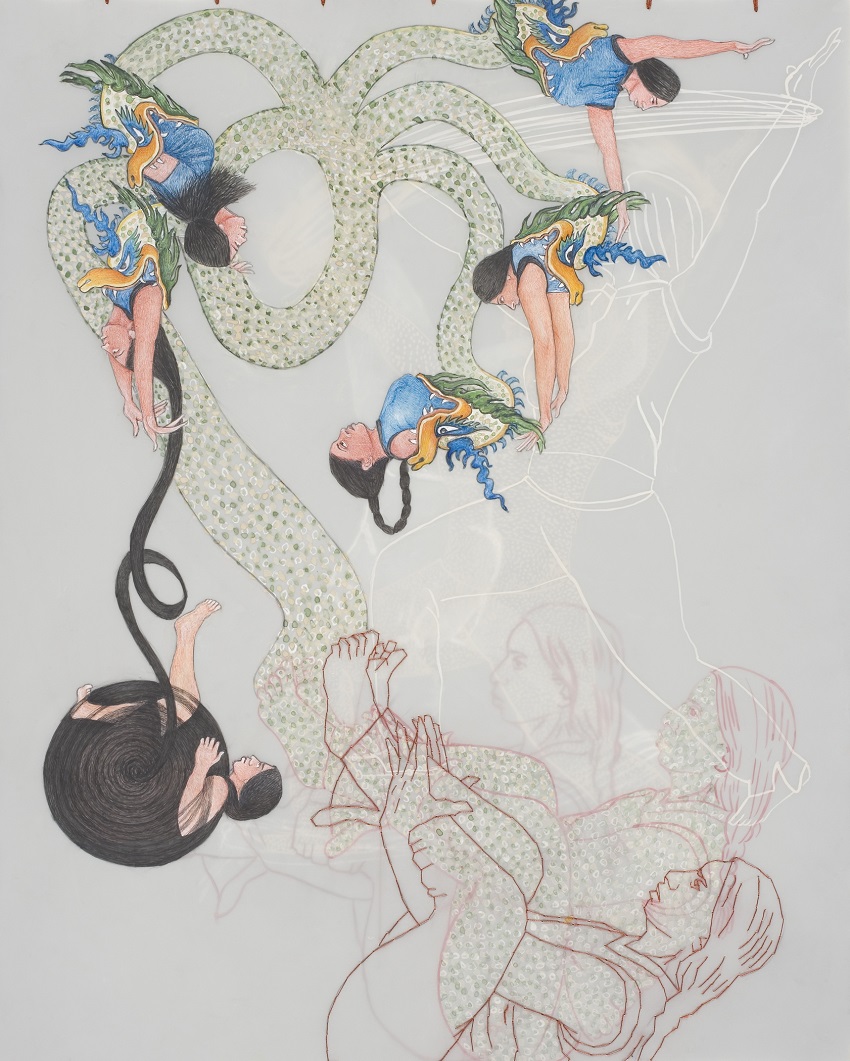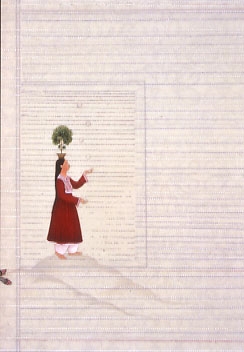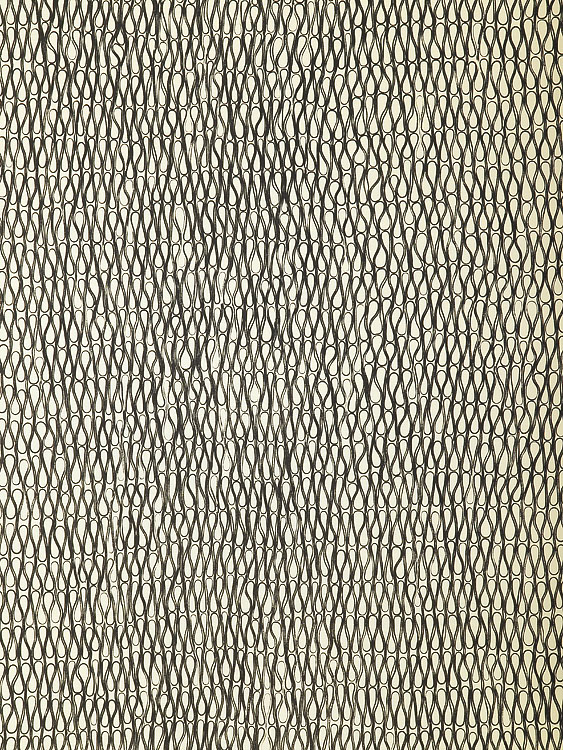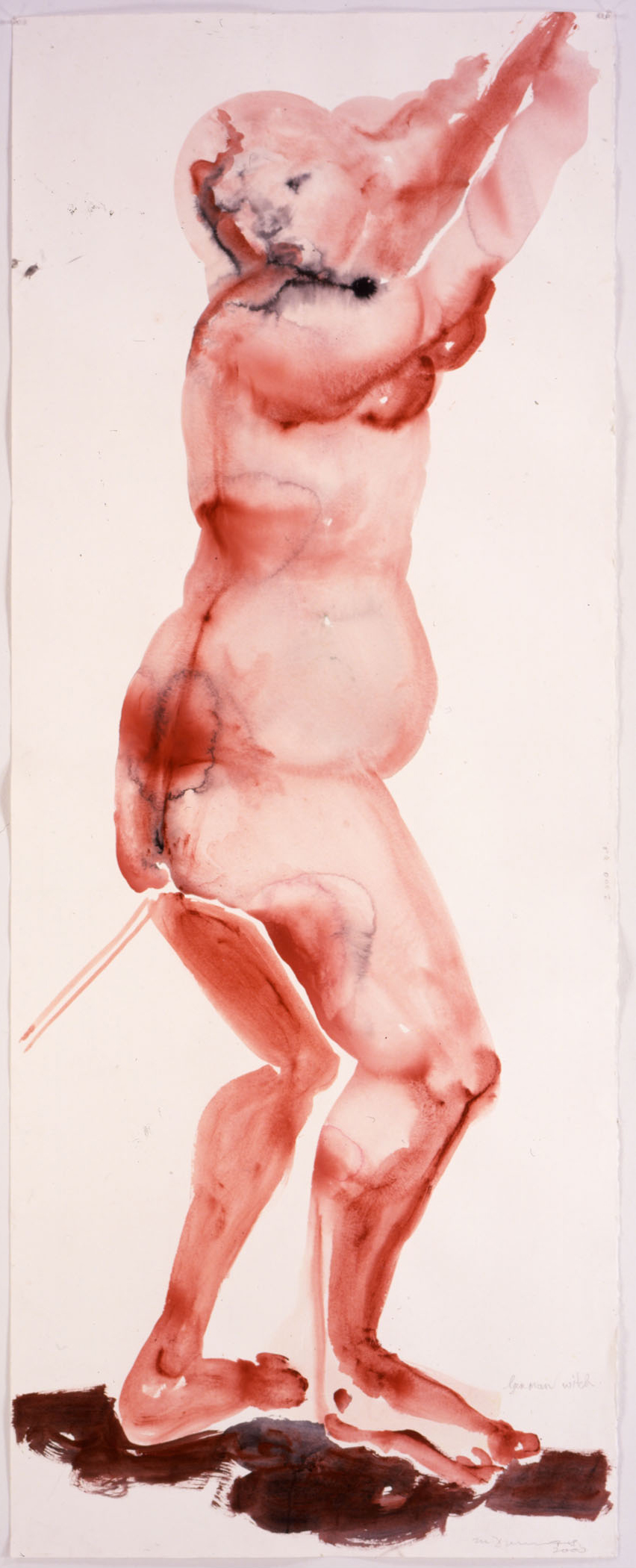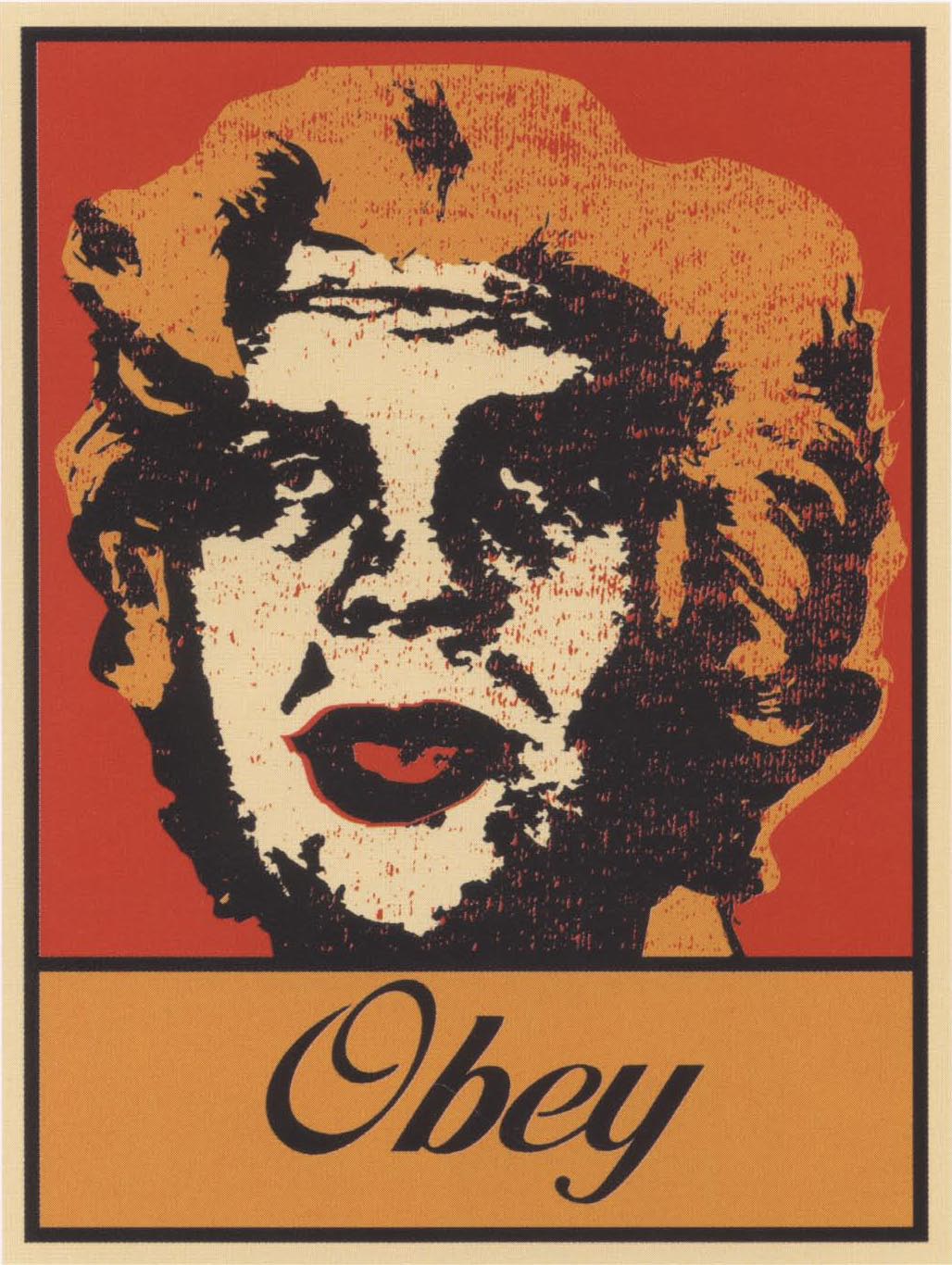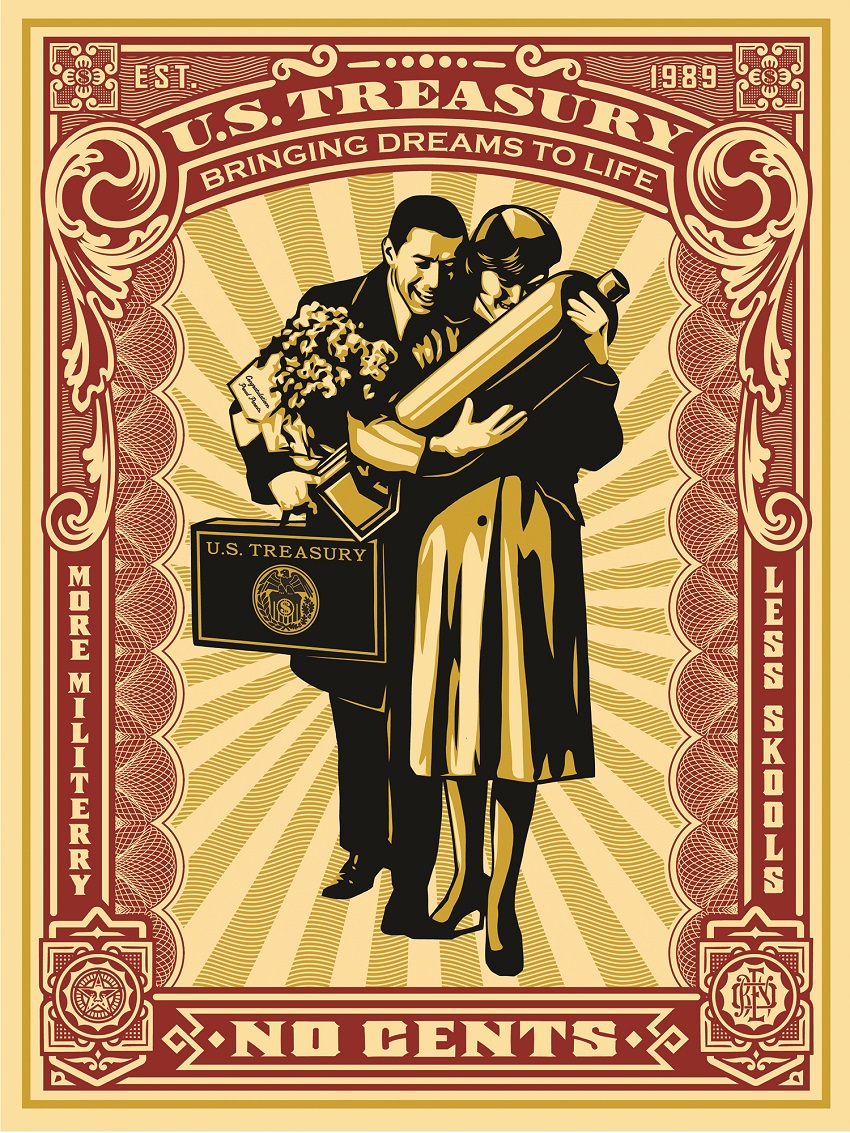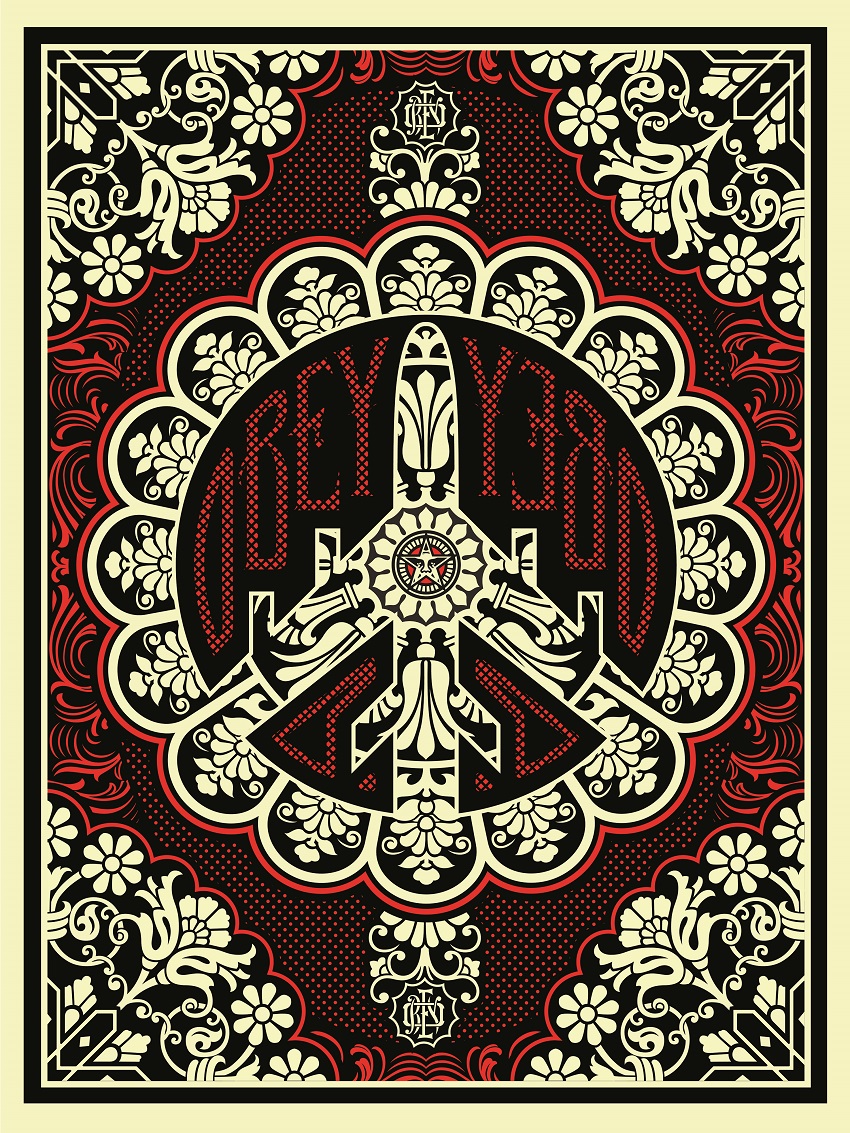Boston-based artist Ambreen Butt (Born 1969 in Lahore, Pakistan) combines aspects of Persian and Mogul miniature painting with contemporary imagery, techniques, and subjects. The mark-making, characters, and illustrated worlds that populate Butt’s practice are purposefully varied, building on a visual, narrative language that Butt has developed over the course of her career. “I use figurative and abstract symbolism, visual reference from the art history as well as contemporary images from the mass media for my viewer to connect with my work at multiple levels.”
Multiplicité depicts a heroine in multiple, as iterations of her character emerge from the mouths of a five-headed dragon with arms in motion and a resolute expression. A spool of hair spiraling around the body of one figure is formed of her own tresses joining those of another. At the lower right, the green and white dots of the dragon’s scales cover our cloned heroine’s skin, blurring the distinction between her and the hydra: did the monster beget her, or vice versa? Butt creates further ambiguity at a formal level, borrowing from Persian painting both the demon figure and the technique of stitching, while deconstructing their traditional use. Here, rather than binding together pages, thread has entered the drawing itself, outlining the contours of the female figure from which the image of the dragon emerges.
Inspired by wasli, the traditional method of laminating sheets to create a single strong surface on which to paint, Butt’s sewn pages create an illusion of spatial depth and phased passage of time while maintaining the thinness of the page. The exquisite and careful detailing allow Butt to explore the visual relationships between symbol, line, color, and scale, often as a personal response to social and political events. “I try to find multiple ways to decode or unravel that personal language,” explains the artist. “In order to fulfill that ultimate need, I use both figuration and abstraction in a platform that is purely my own.”
